
China’s Promise, Nepal’s Wait: Delays and Dismay
Chinese companies, at the forefront of road infrastructure development in Nepal, are facing criticism for significant delays and quality concerns in multiple key projects. The lethargic progress on these projects, combined with unfulfilled assurances from Chinese contractors, has not only raised eyebrows among local authorities but has also cast a shadow over the efficacy of these international partnerships.
A notable case in point is the 113 km Narayangadh-Butwal road section, where China State Construction Engineering Company, a prominent player in the global construction arena, has been entrusted with the construction responsibilities. Despite repeated deadline extensions and stern warnings from the project authorities, the condition of the road section remains subpar. The project faced a genuine threat of contract termination at one point, but the authorities, swayed by assurances from the Chinese company, opted against it. Unfortunately, these assurances proved to be empty, with the contractor failing to make any substantial progress on the project while persistently providing misleading information. In a move that has further fueled skepticism, the deadline has now been extended for the second time, pushing the completion date into uncertain territory.
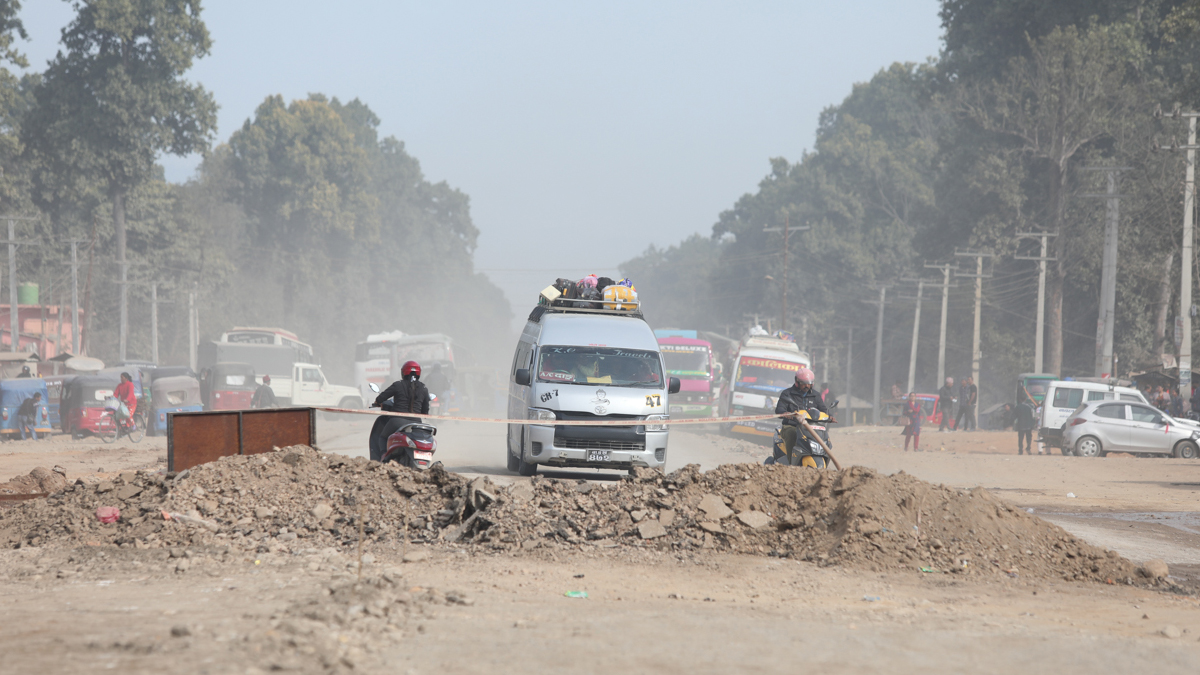
The Narayangadh-Butwal road project, financed with a loan from the Asian Development Bank (ADB), has become a cause for concern as the timeline envisioned at the project’s initiation in 2075 BS aimed for completion by Shrawan 22, 2079 BS. However, after a lapse of five years, the physical progress stands dismally at only 43 percent. This predicament becomes more disconcerting when considering the historical track record of China State Construction, known for consistent delays in fulfilling contracts, and yet, paradoxically, continuing to secure additional contracts for major tunnel constructions in the country. This raises legitimate questions about the reliability and accountability of Chinese contractors engaged in pivotal infrastructure development in Nepal.
A pivotal example of this is seen in the Kathmandu Terai/Madhesh Expressway (Fast Track) project, where China State Construction is tasked with constructing a tunnel from Chokredanda to Dhadre. Simultaneously, another Chinese company, Poly Changda, has been awarded the contract for the tunnel from Dhadre to Lendanda on the same fast track. Both contracts, inked with commitments to complete the work within three years, have encountered setbacks and sparked concerns.
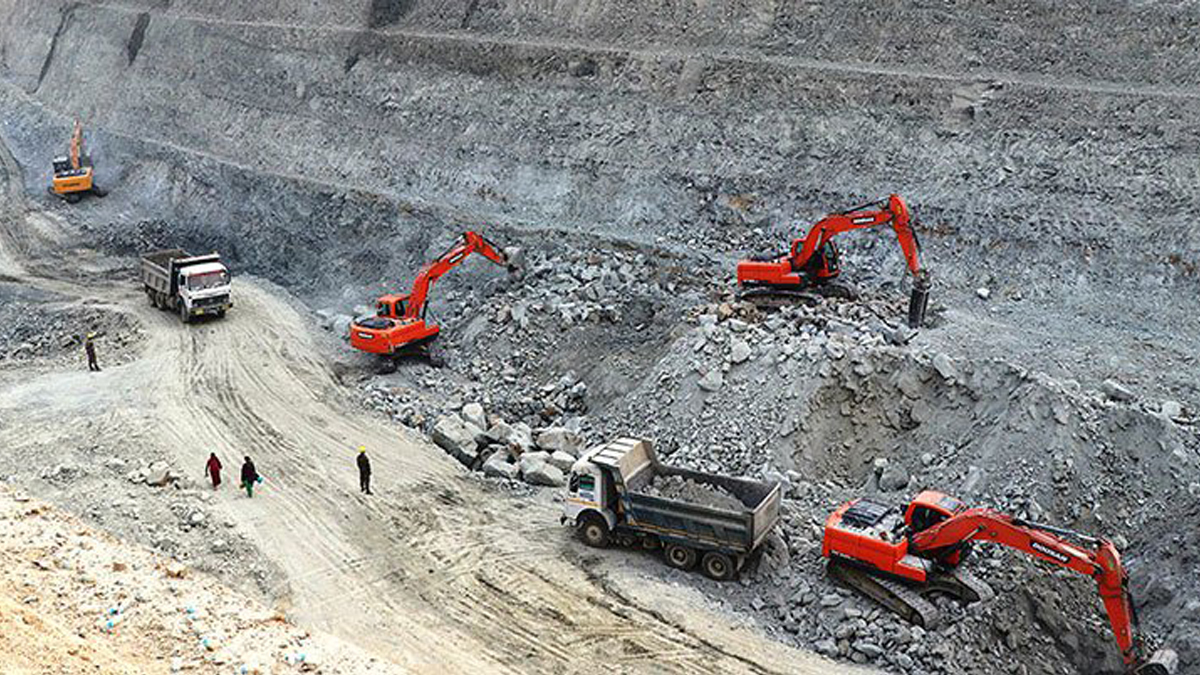
Poly Changda faced suspension on Jestha 9, 2079, owing to delays and apprehensions surrounding the quality of work. Despite the temporary cessation, the same company resumed work, and with only three and a half months remaining until the stipulated completion date, the progress stands at a meager 56 percent. This palpable lack of adherence to deadlines and concerns over work quality raise critical questions about the oversight and accountability mechanisms governing these Chinese contractors operating on Nepalese soil.
China State has also secured the contract for the Siddhababa tunnel route. The Quality Research and Development Center under the road department, responsible for scrutinizing the standards and progress of infrastructure projects, has awarded the contract to China State. However, the corporation, known for persistent delays, is yet to complete its work within the stipulated timeframe.
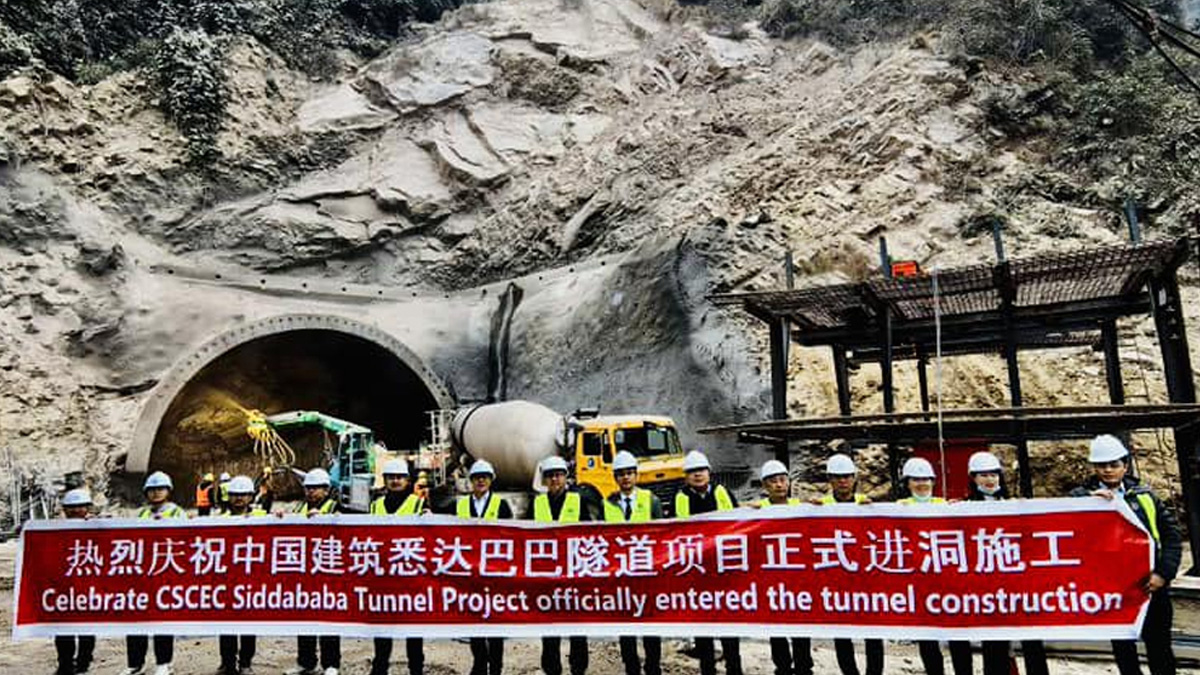
The contract, signed in Falgun 2078, mandates China State to construct the Siddhababa tunnel route within a span of 5 years. In addition to the main tunnel covering a distance of 1.1 km, a 300-meter emergency tunnel is also slated for construction. Unfortunately, the physical progress of the project, as of now, languishes at a mere 10 percent, raising significant concerns about the contractor’s ability to adhere to project timelines.
Nareshman Shakya, the Director of the Quality Research and Development Center, shed light on the challenges faced during the initial phases of the project. He mentioned that the design phase consumed a considerable 9 months, followed by an additional 3 months for approval. Despite these time-consuming processes, Shakya assured that construction work is now in progress.
The Kanchanpur-Kamala road, awarded to a Chinese company, has fallen significantly behind schedule, raising questions about the reliability of Chinese contractors engaged in crucial road development initiatives in Nepal. The agreement for the construction of the Kanchanpur-Kamala section, covering a substantial distance of 86.82 km, was inked on Kartik 13, 2077.
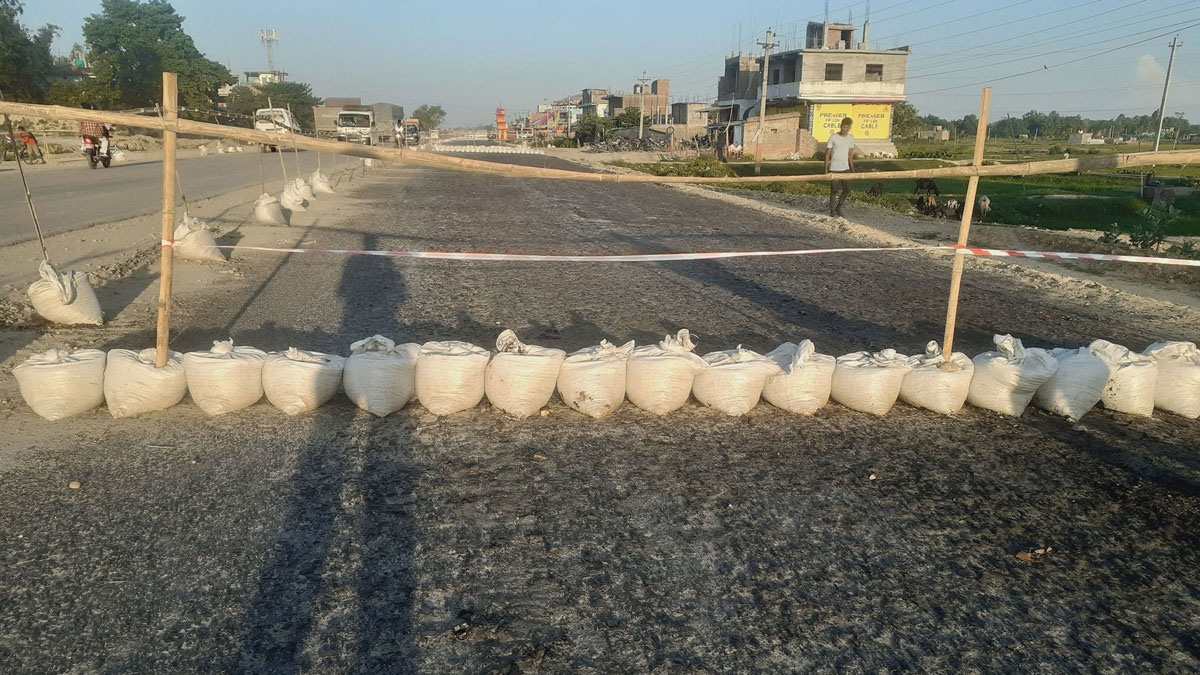
Under the terms of the contract, the construction was slated for completion by Kartik 11, 2080. However, recent assessments reveal that only 41.47 percent of the construction has been completed thus far, signaling a considerable lag in progress. Of noteworthy importance is the project’s division into two parts, and the initiation of the project with the assistance of an Asian Development Bank (ADB) loan, further adding complexity to the unfolding situation.
The Galchhi-Trishuli-Mailung-Syphrubesi-Rasuwagadhi road spans a total distance of 82 kilometers. Despite initial reports indicating that the Chinese government would be providing a subsidy for the construction of this section, the project, which had come to a halt prior to the COVID-19 pandemic, remains in a state of inactivity.Sushilbabu Dhakal, the Director-General of the Road Department, expressed concern over the lack of progress in this crucial section. According to him, an agreement was reached three months ago to resume construction, but unfortunately, the Chinese team has yet to commence their work.
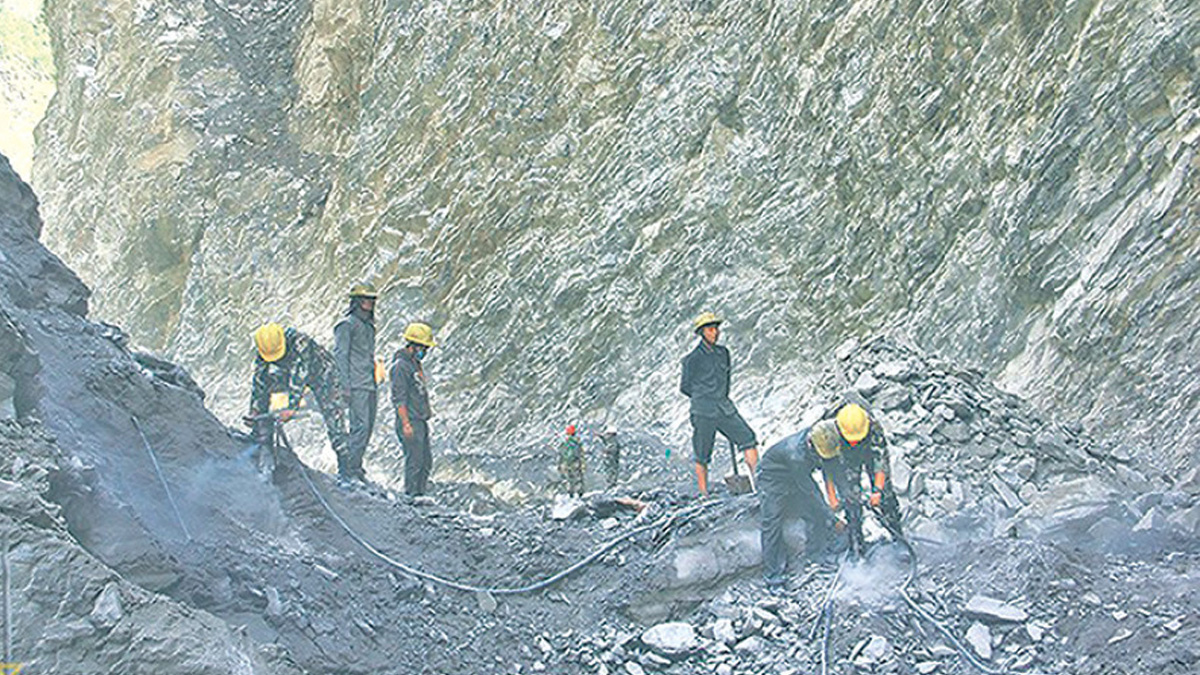
Galchhi-Trishuli-Mailung-Syphrubesi-Rasuwagadhi road is 82 km. Although it is said that the Chinese government will build the section with a subsidy, the work that has been stopped since before the covid has not started yet. Sushilbabu Dhakal, director general of the road department, said that there has been no progress in this section so far.”There was an agreement to work 3 months ago,” he said, “but the Chinese team has not worked yet.”
On the other hand, the comprehensive project report (DPR) for the extension of the second section of the ring road remains incomplete, a year after initiation by the Chinese company. This delay in the preparation of the DPR has not only hindered progress but has also raised questions about the efficacy of Chinese-led initiatives in the country.
The Chinese company tasked with the ring road extension project initiated the DPR work in Falgun 2079, assuring completion within two months. However, this anticipated timeline has been significantly surpassed, leading to a bottleneck in the expansion work. The extension of the second section of the ring road, stretching from Kalanki to Basundhara, is set to be executed with the financial backing of the Chinese government, with China overseeing the construction of the DPR.

In the previous Falgun, China’s Henan Communications Planning and Design Institute took charge of the technical team for the design. The Ministry of Physical Infrastructure and Transport initially declared that the design work would conclude within two months. However, as of now, the design remains elusive. The Road Department reports a lack of advancement in the expansion of the ring road, a project originally envisaged with the assistance of the Chinese government.
Director General of the department, Dhakal, expressed concern, stating, “An agreement between the two countries was established for the construction of the road. Although the design was expected within 6 months, it has not materialized. This is a matter of universal concern, and we anticipate the design to be finalized promptly upon receiving updates from the Chinese Embassy.” The current road configuration spans four lanes from Kalanki to Sitapaila, reducing to two lanes from Sitapaila to the circular path. The planned expansion aims to transform it into an 8-lane thoroughfare.
The Government-to-Government (G2G) agreement inked with China in 2018 explicitly states that the road extension will only reach Bashundhara. Consequently, China’s involvement is limited to the 8.2 km stretch from Kalanki to the Bashundhara culvert. Despite the completion of the initial study on the tunnel connecting Kathmandu’s Tokha to Nuwakot’s Chahare by the Chinese team five years ago, no substantial progress has been observed. The team that arrived in Falgun returned to China without any further advancements, leading to a prolonged stagnation in the project.
In the preliminary study, the team conducted field observations, data collection, and studied the Galchhi and Balaju roads. Initially, the tunnel’s distance was reported as 7 km. However, the technical team later clarified during the preliminary study that it could be four km instead. Despite the initial mention of the tunnel’s construction originating from China, there has been no observable progress. In the current year, although the budget has been allocated for the environmental impact assessment study on the tunnel, no work has been initiated.
The physical progress of the Mugling-Pokhara road section of Prithvi Highway has been disappointing in the three years since its commencement. The contract for the Mugling-Pokhara road section, awarded in the fiscal year 077/78, was split into two sections: Ambukhaireni-Jamune 1st (East) and Jamune-Pokhara 2nd (West). The project, supported by the Asian Development Bank (ADB), aimed to upgrade the road from 4 to 6 lanes and construct 7 large and 22 small concrete bridges, with a stipulated completion date set for the fiscal year 081/82.
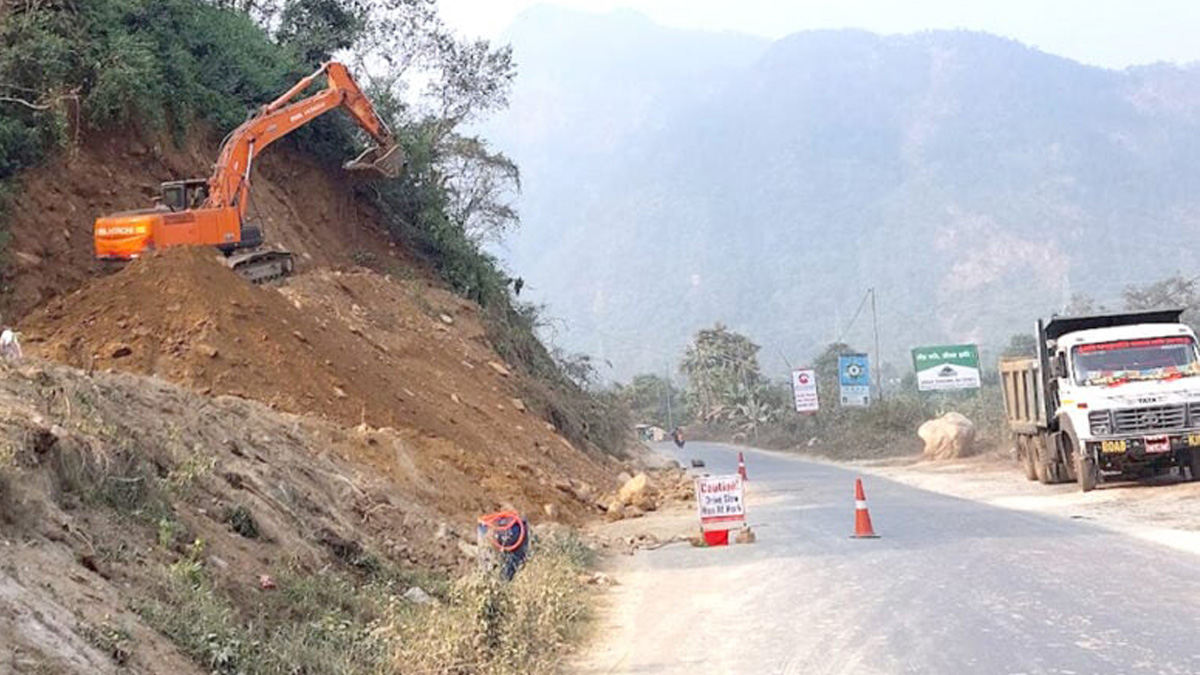
China Construction Company Corporation and Yan Hui Construction were awarded the contracts for the first and second (west) sections, respectively. However, the physical progress for the first section currently stands at approximately 44 percent, while the west section lags significantly behind at only 14 percent completion. These delays raise serious concerns about the ability of Chinese contractors to adhere to project timelines and deliver on the promised infrastructure upgrades.
In addition to road projects, there are also issues with projects claimed to be constructed by the Chinese government. One glaring example is the 220 KV Rasuwagadhi-Kerung transmission line, spanning 11 km. Despite claims of Chinese government involvement, there has been no discernible advancement in the construction of this critical transmission line, further highlighting a pattern of unmet commitments and stalled progress.
Dhakal, the director-general of the road department, expressed concern about the pervasive nature of issues in Chinese-contracted road projects, stating, “The road contract awarded to the Chinese company is not progressing as anticipated; this issue is prevalent in the majority of road projects.” This sentiment echoes the growing discontent among local authorities regarding the reliability and efficiency of Chinese contractors in delivering crucial infrastructure projects in Nepal.
As these challenges continue to mount, it becomes imperative for Nepalese authorities to conduct a thorough review of their partnerships with Chinese construction companies. Transparency, accountability, and adherence to project timelines and quality standards must be prioritized to ensure the successful and timely completion of infrastructure projects that are essential for the country’s development. The public’s trust in these partnerships and the future of infrastructure development in Nepal depend on effective oversight and corrective actions by the concerned authorities.
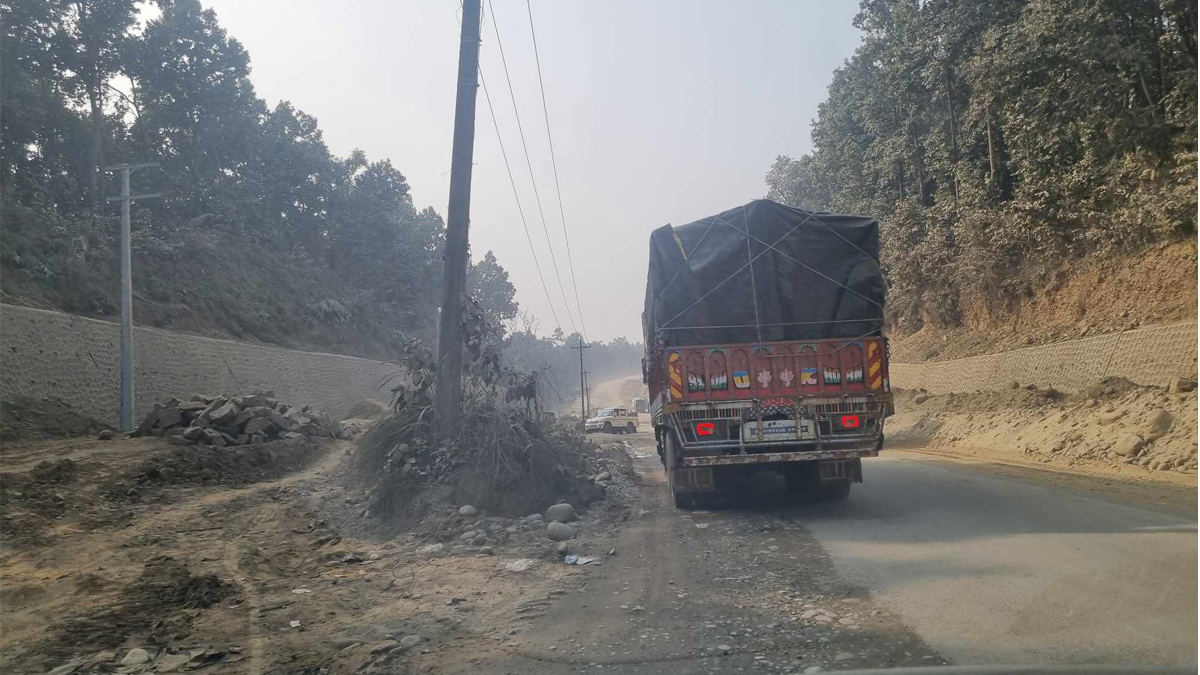



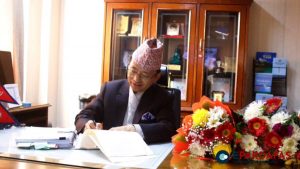

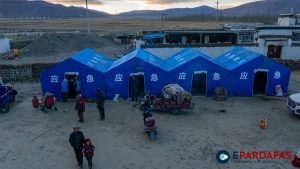






Comments